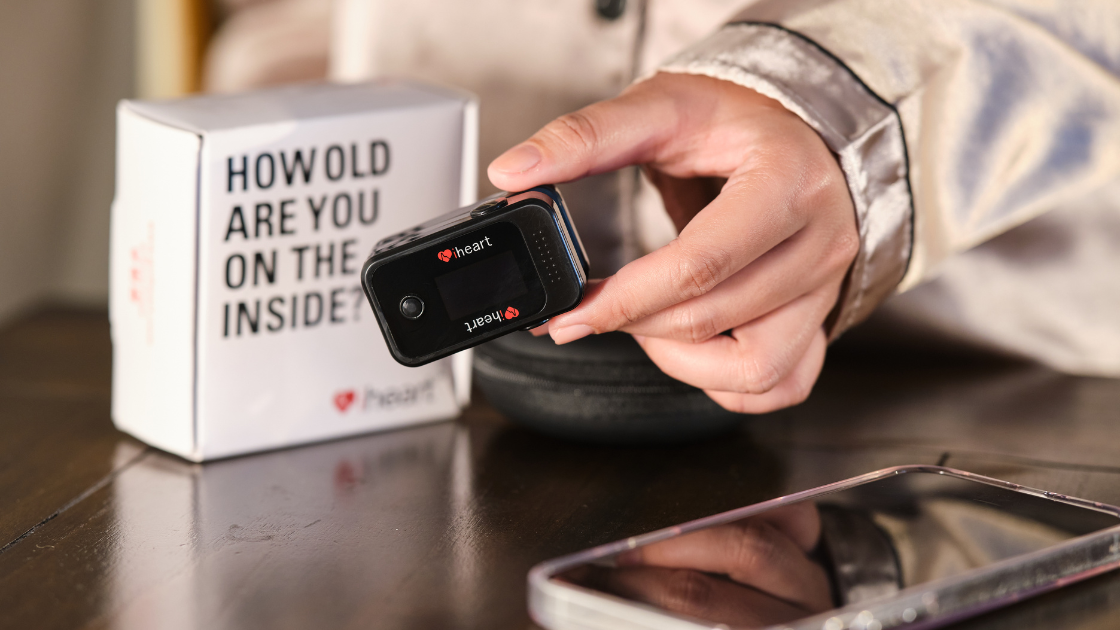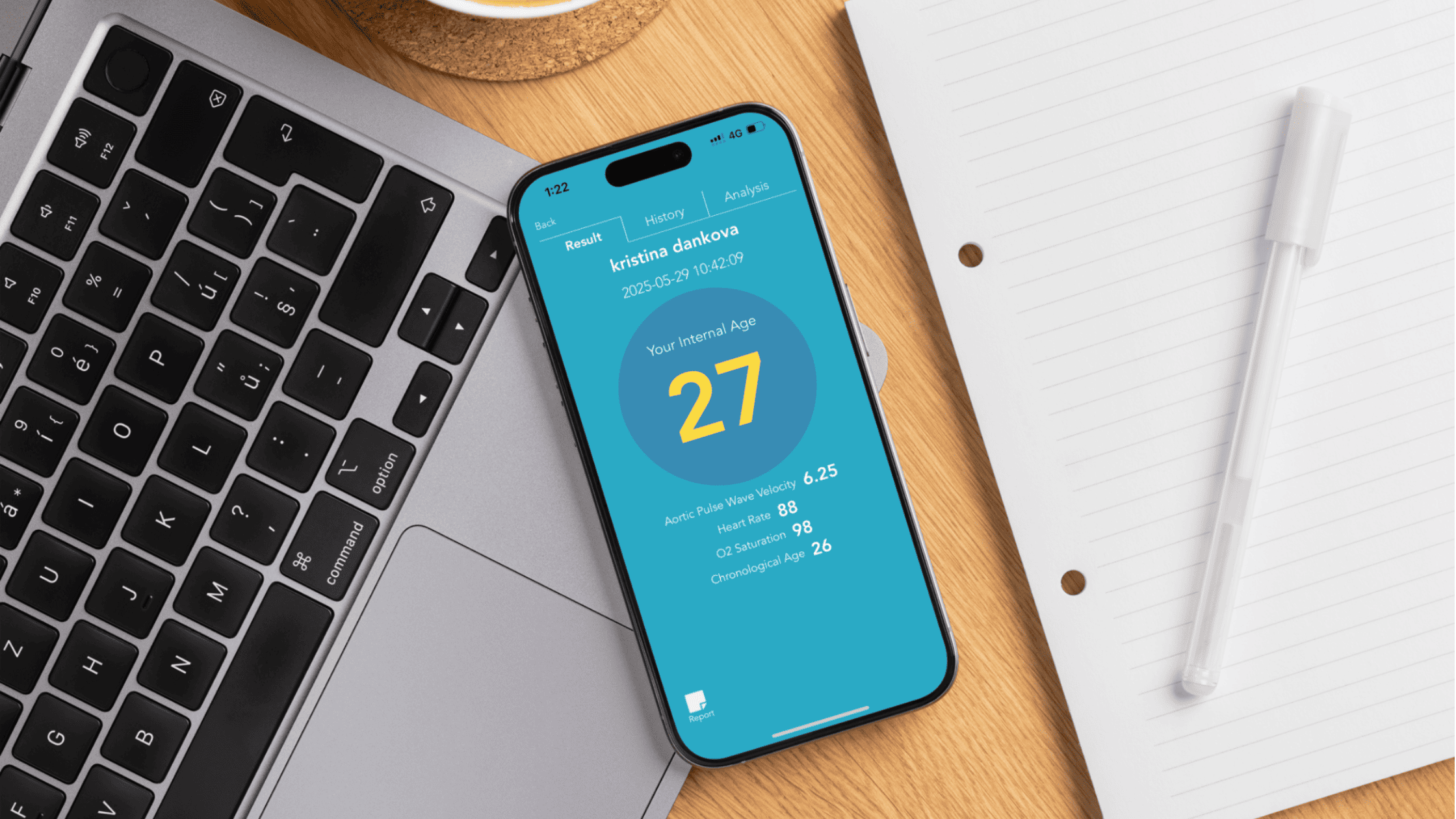Imagine a system that gives you a complete snapshot of the state of your internal health any day, right from the comfort of your home. This isn’t like anything you’ve seen before. We are bridging ancient wisdom, known as Inner Mobility, and modern Western science to tackle the core aspects of your health. With the iHeart System, you can truly understand your body and mind, empowering you to make the best choices for optimal health and longevity. And don’t worry—this system is simple and user-friendly.
In today’s article, we’ll explore how you can effectively track your health at home and what changes you can make to improve your results over time. Let’s get started!
What Exactly Is the iHeart System?
You may be wondering what this iHeart System is all about. The iHeart System was meticulously designed by a team of medical experts to help you easily measure and track your internal health. This system empowers you to add years to your life through simple lifestyle changes. Each app within the system has different functions, providing various metrics for a complete, holistic understanding of your body and mind.
It’s an integrative system consisting of a simple fingertip device and five powerful mobile apps:
- iHeart Internal Age
- iHeart Brain
- iHeart HRV
- iHeart Record
- iHeart Remote
How Each App Can Help You Track Your Health.

iHeart Internal Age
Ever wondered about your internal age? The iHeart Internal Age app measures aortic stiffness, which is the elasticity of your blood vessel walls. This is a surrogate measure of spinal flexibility and a proven predictor of cardiovascular risk and all-cause mortality. In other words, it provides an objective spinal flexibility test and offers a score based on the elasticity of your blood vessels, indicating your internal or biological age. Your goal is to achieve an internal age lower or equal to your chronological age, and this is something you can control by adjusting your habits and behaviors.

iHeart Brain
This app tracks blood pressure changes when you quickly stand from a seated position, known as the orthostatic response. This indicates the health of your autonomic nervous system (ANS)—the part of your nervous system that regulates involuntary processes like heart rate, blood pressure, and respiration. With the iHeart Brain app, you’ll receive a readiness score out of 100, which reflects the coordination between your heart and ANS. The higher your score, the more ready and resilient you are for the day’s challenges, and the healthier you are.

iHeart HRV
Stress is part of life, and sometimes it’s even beneficial. However, chronic or long-term stress is detrimental to your health and can lead to conditions like hypertension, type 2 diabetes, and obesity. With the iHeart HRV app, you can objectively track your stress levels. This app measures your heart rate variability, a key indicator of stress.
Just like the iHeart Brain app, it provides a score out of 100. The higher your score, the more relaxed you are. Tracking this data allows you to take measures to reduce your stress in real-time, helping you feel calmer, happier, and healthier.
Here are 3 tips to hack your stress levels easily

iHeart Record
The iHeart Record app allows you to measure heart rate and blood oxygen saturation over various periods (1, 3, 5, or 10 minutes). Use this app to assess a range of physiological and emotional responses. Your results will show an average heart rate and blood oxygen saturation, providing insights into your cardiovascular health and overall well-being.

iHeart Remote
The iHeart Remote app allows users to share real-time pulse wave data from anywhere in the world. This app remotely connects two users, with one using the iHeart device and the other monitoring their heart rate and oxygen saturation from their mobile device. The user with the iHeart device selects “New session,” while the monitoring user selects “Join a session” and enters a unique code shared by the first user.
Typical Morning Routine with Your iHeart System
-
Start with iHeart Internal Age – Measure Your Inner Age
What to Do: After waking up, use the iHeart Internal Age app. Place the fingertip device on, pair it via bluetooth to this mobile app and let it measure your aortic stiffness, which reflects your biological age.
Why: Knowing your internal age compared to your birth age helps you understand cardiovascular health with ease. If your internal age is higher than your chronological age, consider prioritizing gentle stretching or yoga to support spine flexibility and improve your score over time.
Read 5 ways to lower your biological age.
-
Check Your Readiness Score with iHeart Brain
What to Do: Before breakfast, take a quick orthostatic test with the iHeart Brain app. This test measures your blood pressure response as you stand up, providing a readiness score that reflects your ANS health.
Why: Your readiness score can help you plan your day. A high score means you’re ready to tackle challenges, while a lower score suggests you pace yourself and consider relaxation exercises to support your body’s natural rhythms.
Learn how to get the most out of your iHeart Brain App
-
Mindful Breathing and Stress Check with iHeart HRV
What to Do: After breakfast, use the iHeart HRV app for five minutes to assess your heart rate variability and current stress levels.
Why: Knowing your stress levels first thing in the morning can set the tone for the day. If you’re feeling tense, take a few deep breaths or practice mindful breathing to bring yourself to a state of calm.
-
Assess Your Heart Rate and Oxygen with iHeart Record
What to Do: As you wrap up your morning routine, use the iHeart Record app to check your heart rate and oxygen saturation.
Why: Monitoring these vital signs helps you understand how your body functions at rest. Consistent monitoring provides valuable insights into how your cardiovascular system responds to lifestyle changes, and general wellbeing.
-
Check in on Family or Connect with Your Wellness Practitioner
What to Do: Don’t only track your health. If you have a loved one who also uses iHeart, connect with them through the iHeart Remote app. You can monitor each other’s heart rate and oxygen levels, allowing for real-time support. This can also be used for online wellness coaching sessions for a more personalized coaching experience.
Why: This is a great way to track your health and that of your loved ones, ensuring they are taking care of their health, adding an extra layer of support and accountability.
Final Words
You are your own best advocate for health and well-being. Understanding your body and mind allows you to take proactive measures, preventing issues before they arise. Prevention is always better than cure. If you are looking for an integrative, simple and effective way to track your health, the iHeart System will help you improve your inner mobility and take charge of your health holistically. With this our approach, where each breath activates vital organs responsible for maintaining health, preventing illness, and determining lifespan.
REFERENCES
Mariotti A. (2015). The effects of chronic stress on health: new insights into the molecular mechanisms of brain-body communication. Future science OA, 1(3), FSO23. https://doi.org/10.4155/fso.15.21






Share:
Why Spinal Flexibility Matters More Than You Think
THE BEST PREVENTIVE HEALTH STRATEGY— INNER MOBILITY